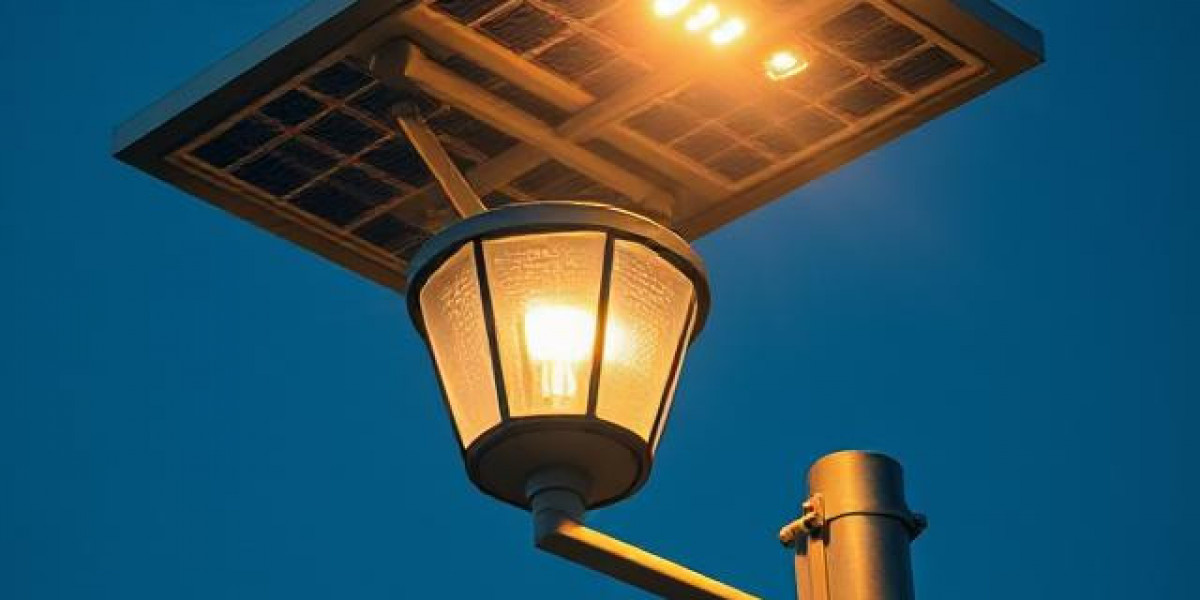At night, a well-lit street does more than help us see—it makes us feel safe, welcome, and connected. Street lighting has always been a symbol of progress, but in recent years, the conversation has shifted from “How do we light our streets?” to “How do we light them responsibly?”
That’s where the solar street light steps in. This isn’t just an upgrade to our lighting—it’s a shift toward sustainability, efficiency, and independence.
1. What Makes Solar Street Lights Different?
The magic of a solar street light lies in its independence from the electrical grid. Instead of drawing power from fossil-fuel-based sources, it captures energy directly from the sun. Here’s how it works:
Solar panels absorb sunlight during the day.
Batteries store the captured energy.
LED lamps convert that stored energy into light at night.
With no cables running underground and no dependence on fluctuating electricity prices, these lights are self-contained, reliable, and eco-friendly.
2. The Environmental Advantage
Our planet is under pressure. Traditional lighting systems contribute to greenhouse gas emissions, directly linked to climate change. Solar street lights, however, create a solution that benefits both people and nature.
Zero carbon emissions during operation
Reduced fossil fuel consumption
Minimal light pollution with directional LEDs
This shift to solar power reduces our collective carbon footprint and aligns with global sustainability goals.
3. Savings That Go Beyond the Electricity Bill
While it’s true that solar lighting eliminates monthly energy costs, the financial benefits don’t stop there. There’s no trench digging, cable laying, or major maintenance. The absence of a connection to the electrical grid means fewer parts that can fail.
Over time, these savings make solar street lights a smart investment for municipalities, businesses, and homeowners alike.
4. The Role of Solar Street Lights in Public Safety
Good lighting deters crime, reduces accidents, and encourages evening activity. In neighborhoods where solar street lights have been installed, residents report feeling safer walking home after dark.
Unlike conventional lights, these solar-powered fixtures keep shining during power outages, ensuring that streets remain illuminated in emergencies—whether it’s a storm, blackout, or other disaster.
5. Perfect for Remote and Developing Regions
Many rural and developing areas lack access to reliable electricity. Running electrical infrastructure to these regions is often expensive and impractical. Solar street lights solve this problem.
They can be installed virtually anywhere the sun shines, bringing light to roads, markets, and public spaces in places that previously went dark after sunset.
6. Durability in All Conditions
Modern solar street lights are designed to withstand extreme conditions—scorching heat, heavy rains, snow, and strong winds. With corrosion-resistant materials and waterproof components, they’re built for long-term outdoor use.
LED technology further extends their lifespan, with bulbs lasting up to 50,000 hours before replacement is needed.
7. Smart Technology Meets Solar Power
The latest generation of solar street lights comes with intelligent features such as:
Motion sensors that brighten when movement is detected
Dimming options to save power during low-traffic hours
Remote monitoring for easy maintenance
Adaptive brightness control based on real-time weather conditions
These smart systems ensure energy efficiency without compromising visibility.
8. Minimal Maintenance, Maximum Performance
Once installed, solar street lights require very little upkeep. Regular cleaning of the panels and occasional battery checks are typically enough to keep them performing at their best.
Unlike grid-powered lights, there’s no risk of wire damage or expensive electrical repairs.
9. A Long-Term Vision for Cities
Forward-thinking cities are beginning to view solar street lights as more than just a cost-saving measure. They’re a symbol of environmental commitment, technological innovation, and community care.
Urban planners now integrate these lights into broader smart city designs, connecting them with IoT networks for energy tracking and predictive maintenance.
10. Why Businesses Are Joining the Movement
Commercial properties, industrial complexes, and parking areas are embracing solar street lighting as part of their corporate social responsibility initiatives. The benefits are twofold—reduced energy expenses and an enhanced public image as an environmentally conscious brand.
11. The Future Is Solar
As battery efficiency increases and solar panels become even more effective at capturing energy in low-light conditions, the capabilities of solar street lights will continue to grow.
In the near future, we could see solar street lights that:
Provide free public Wi-Fi
Integrate with electric vehicle charging stations
Host security cameras powered entirely by the sun
Conclusion
The world is in the midst of a lighting revolution. The solar street light is not just another street fixture—it’s a powerful statement about where we’re headed as a society.
It’s proof that we can illuminate our paths without dimming the future of our planet. Whether in bustling cities or remote villages, these lights stand as a beacon of safety, sustainability, and innovation.
One thing is clear: the future of street lighting is shining bright—and it’s powered by the sun.








